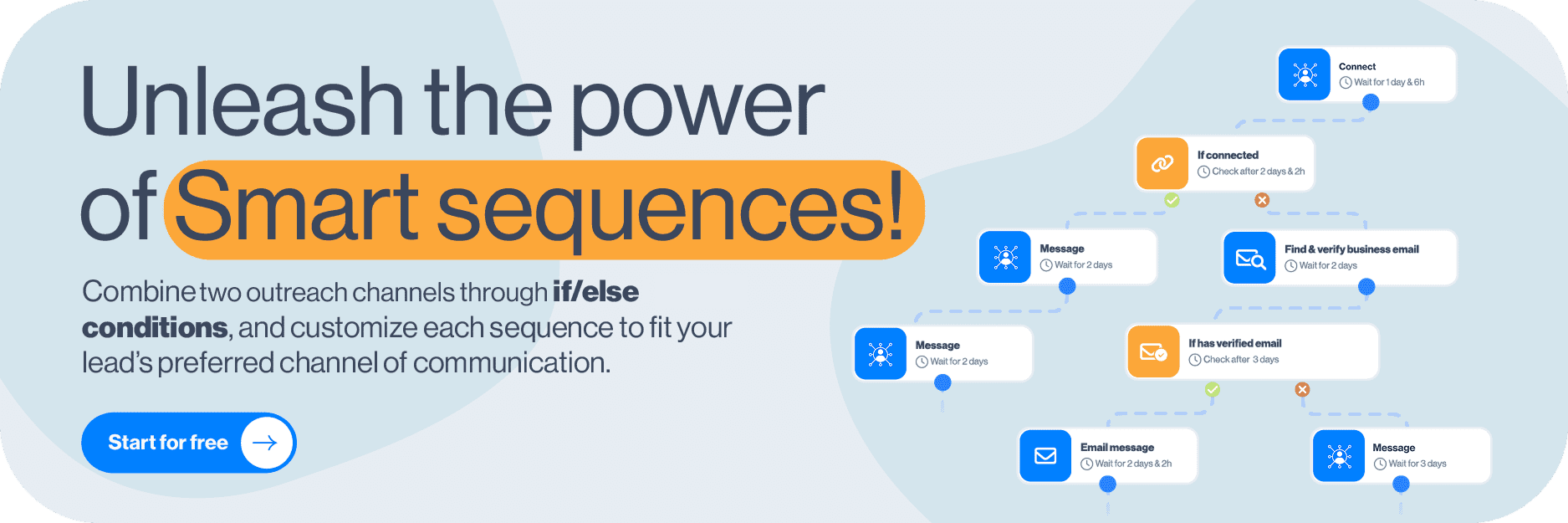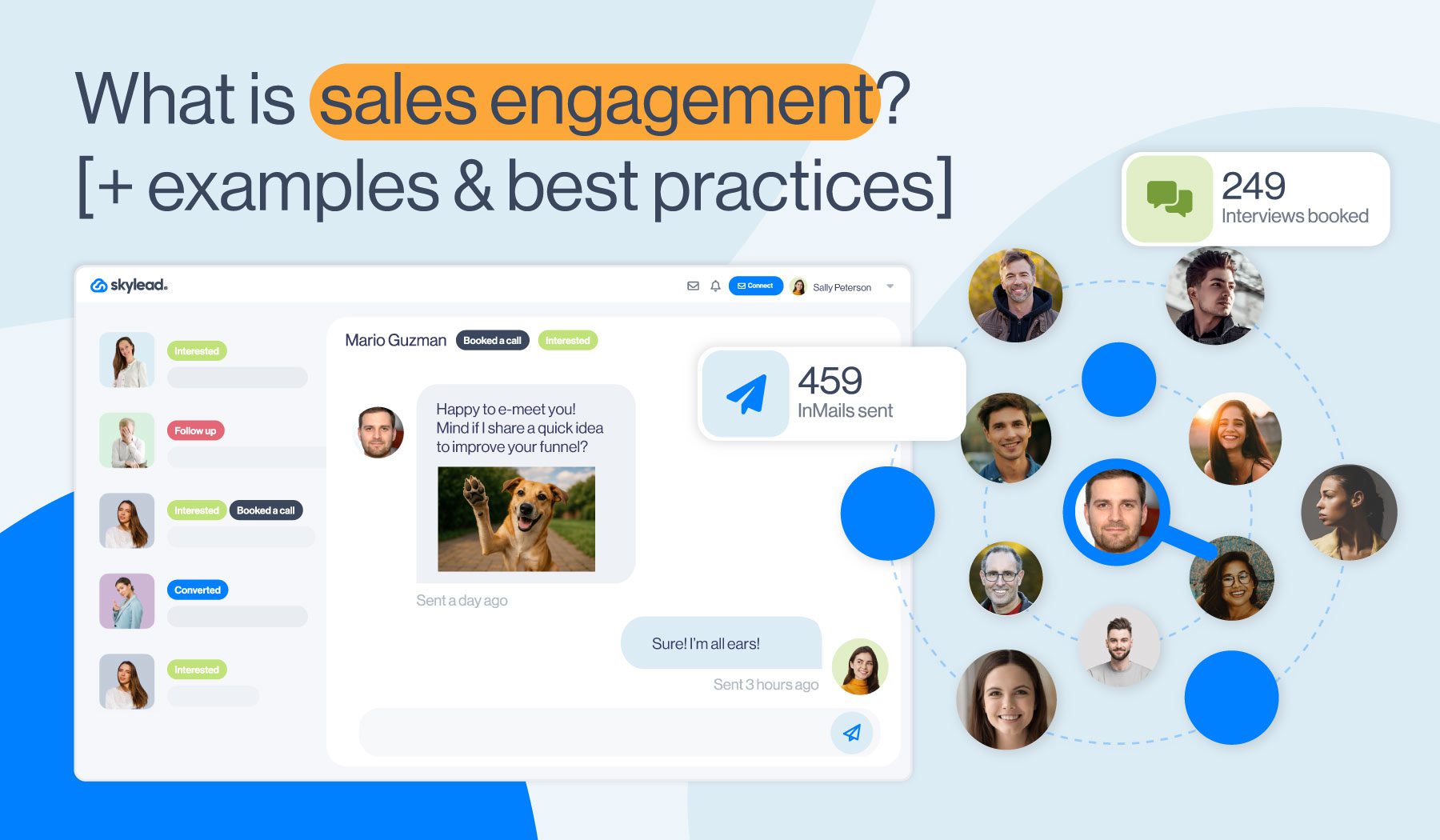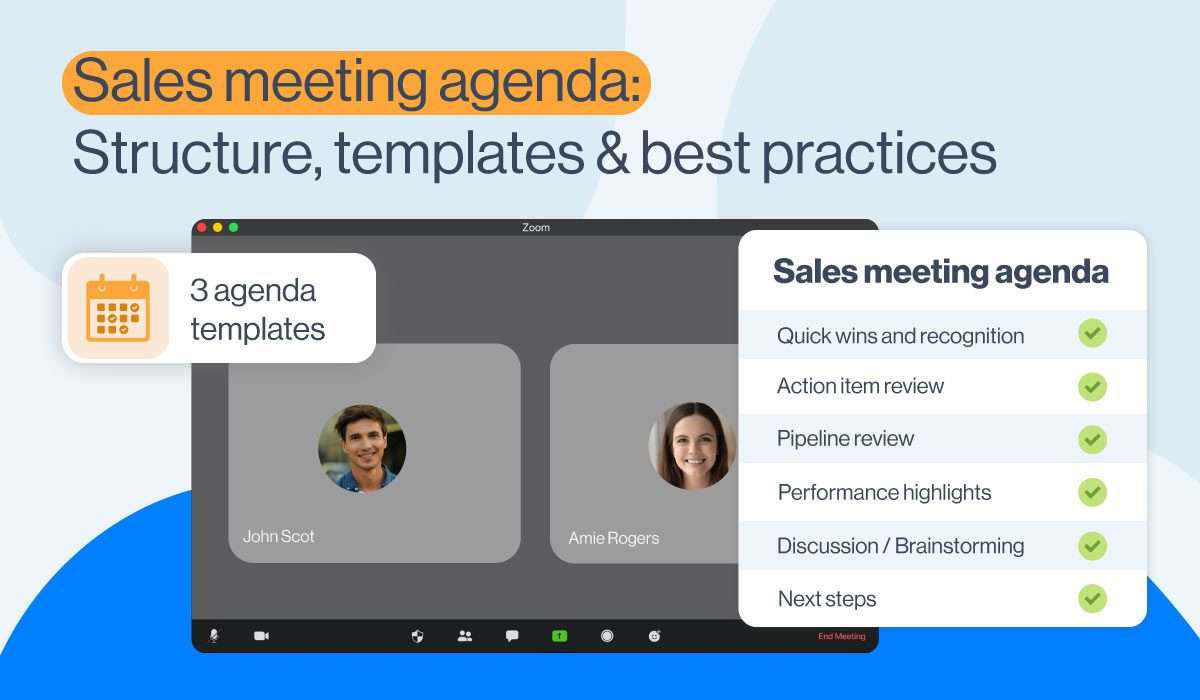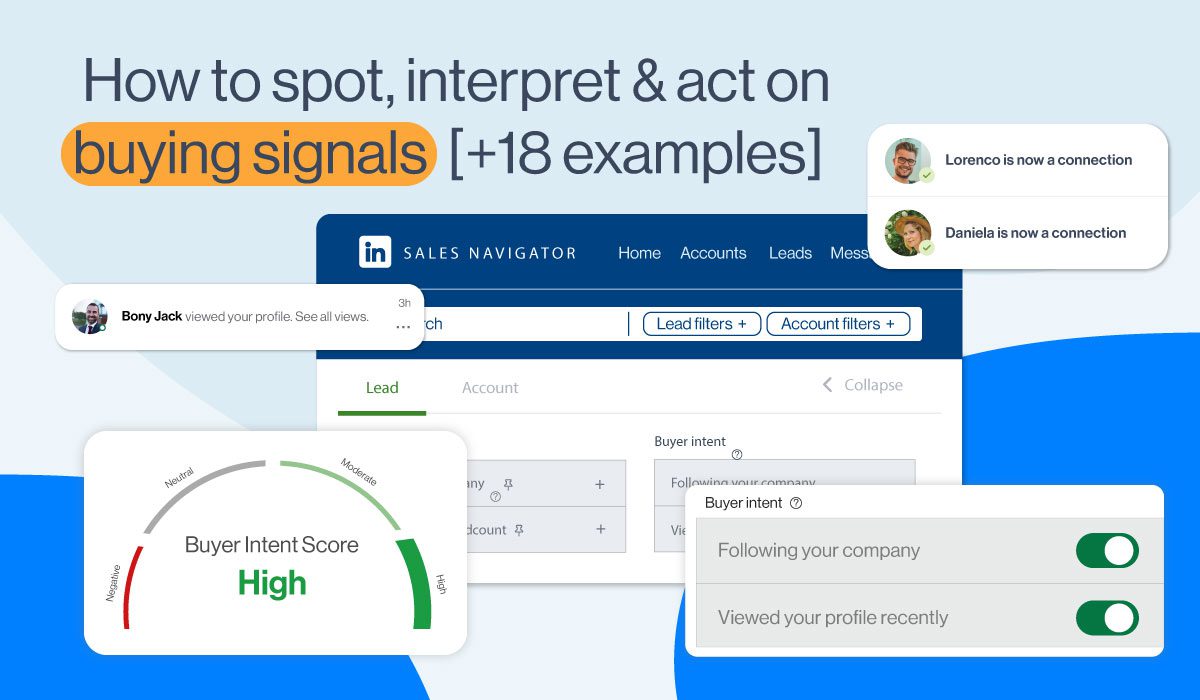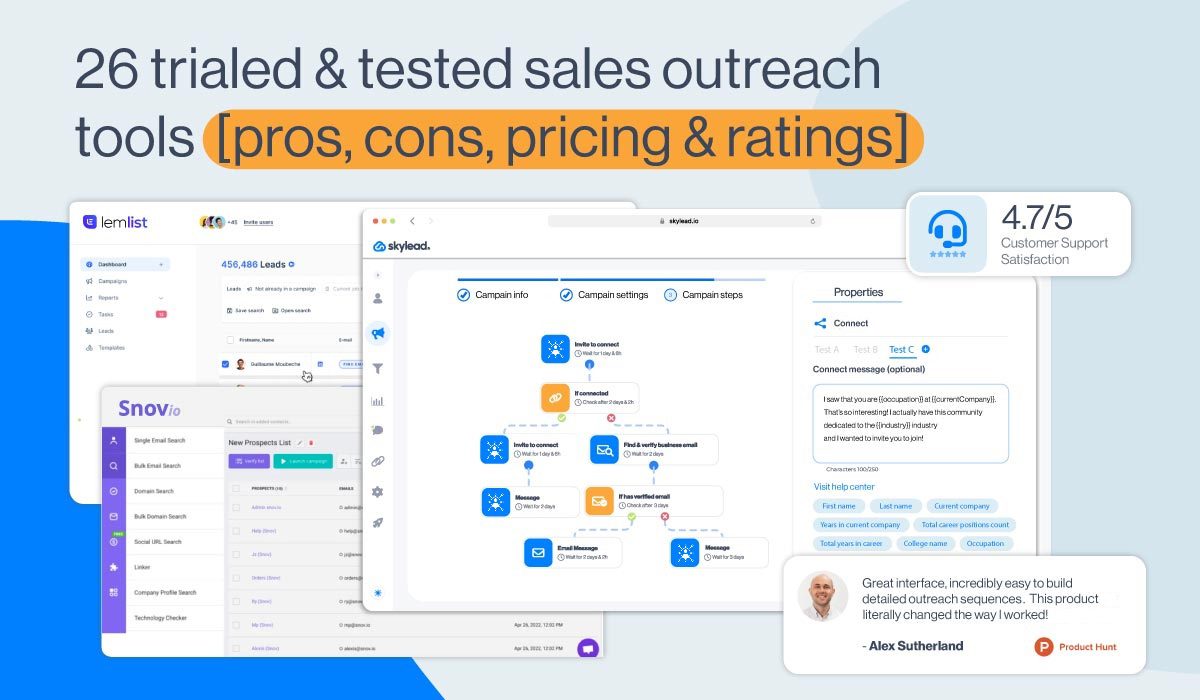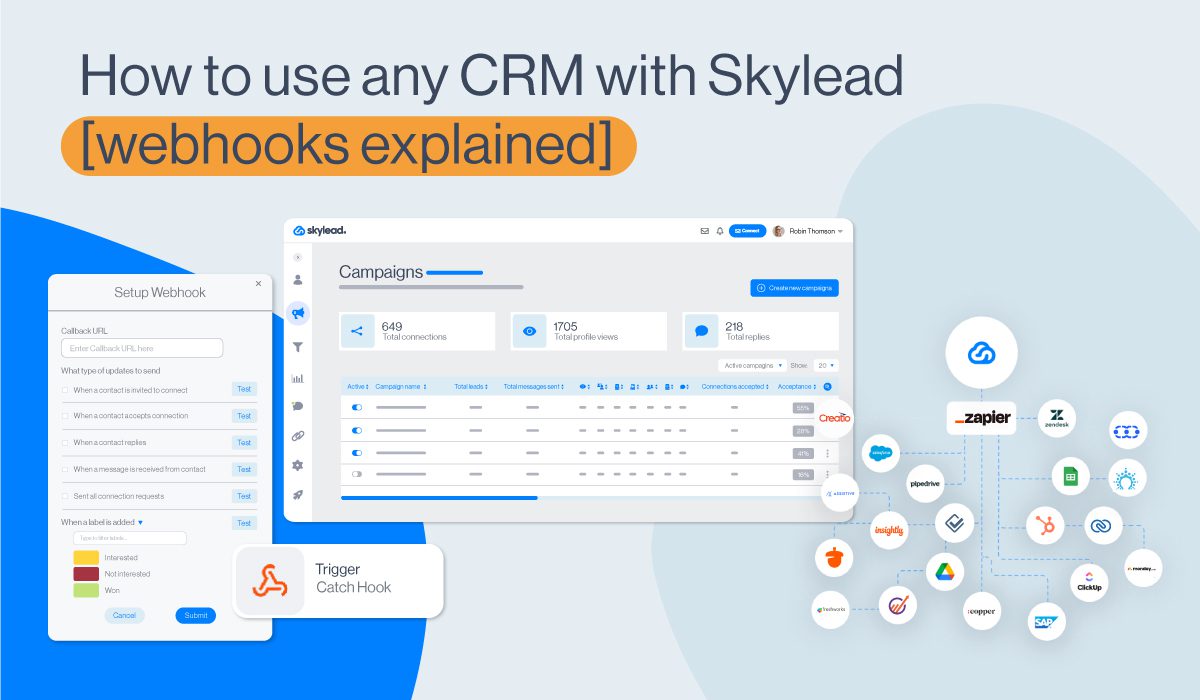Ultimate guide to social selling [part 1]: 10 social selling tips to boost your sales
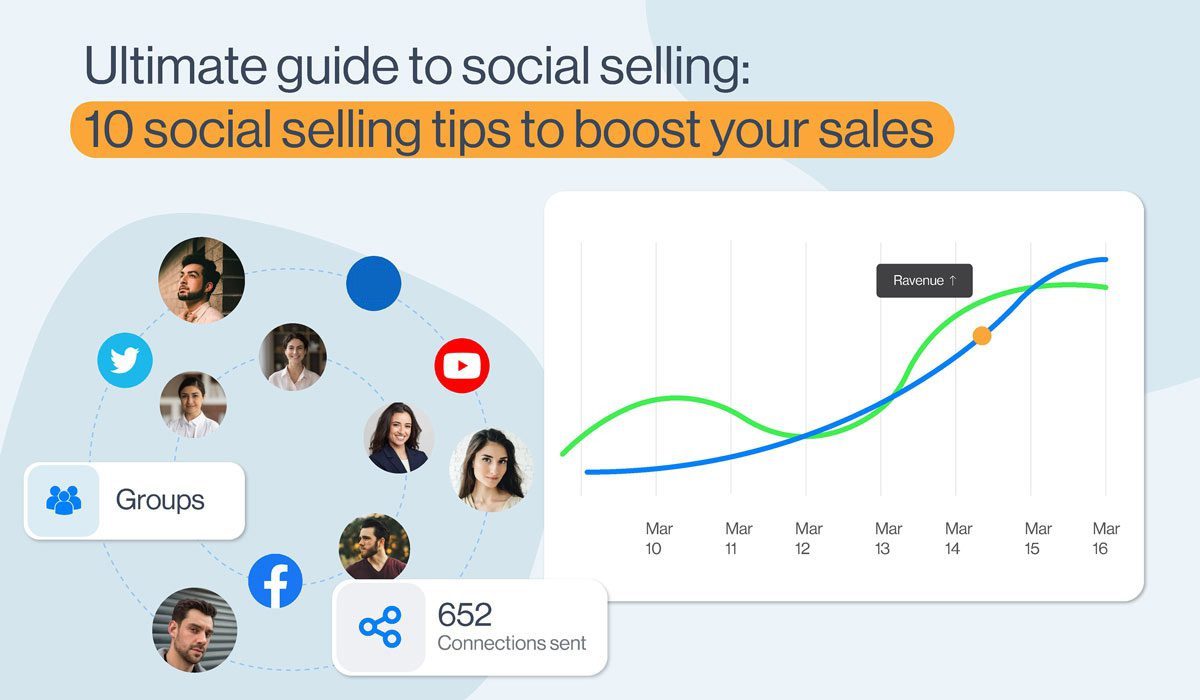
Disclaimer: Skylead is not affiliated, endorsed by, or connected with LinkedIn in any way.
Social Selling or Old Sales Engagement Approach?
You are standing at a crossroad in the middle of the field. On the left, there is a sign “The old ways of sales” loosely dangling from the barren tree. A trodden path beneath the sign leads to the campfire in the night. Crows are cawing at you like the alarm, as you approach the tree hole they guard.
Towards the other path hangs a neatly hammered sign saying “Social selling”. Sun shines upon it, and you hear laughter echoing in the valley. You notice something else in the distance: the mountain, tall as the sky itself, and people climbing it.
Which way will you go?
The crossroad choice seems pretty obvious, doesn’t it? Give crows bread crumbs, grab the notebook they were hiding in the tree as your foundation. Let us take your hand as we walk towards the valley and train you for the mountain climb.
What is Social Selling?
Social Selling definition
Let’s start with the basics. Social selling is a lead generation strategy where you should connect with prospects and develop deeper relationships before leading them further down the sales funnel. In general, it can take place online or offline, but due to recent events, it is more of a social media thing now.
A big part of B2B social selling is constantly listening, understanding the prospects’ pain points, educating, and providing tailor-made value. What does this mean for SDRs? Prospects come first - their pain points, worries, and sales reps as company representatives should offer empathy and help in the form of a solution.
Here is how it differs from the old sales ways:

According to LinkedIn, 78% of social sellers outsell their peers who do not use social media.
It is important not to confuse selling on social media with social media marketing and advertising. Social selling means direct and personal interaction with customers via their social media activity to create a sense of credibility and establish a relationship. Social media marketing, on the other hand, means conducting promotional activities using the company's social media accounts and building brand awareness that way.
As social selling is a fairly complex strategy, with a web of possibilities and outcomes, we are creating a two-part blog series so you can easily master your social selling skill to boost sales. Let’s first dive deep into how you can measure the effectiveness of selling on social media.
How to measure Social Selling success
Before sharing social selling tips, we must emphasize how important it is to track and measure social selling activity. With documenting and tracking, you will know where you succeeded or what needs adjusting to improve selling on social media. Here are the top 8 social selling metrics which will help you out.
#1 Social Selling metric: SSI
As one of the most popular selling on social media metrics, LinkedIn’s Social Selling Index (SSI) proved to be a great indicator of your social selling status on LinkedIn.
LinkedIn found a way to measure how effective your presence on this platform is by building your brand, connecting with the right people, engaging, and establishing relationships.
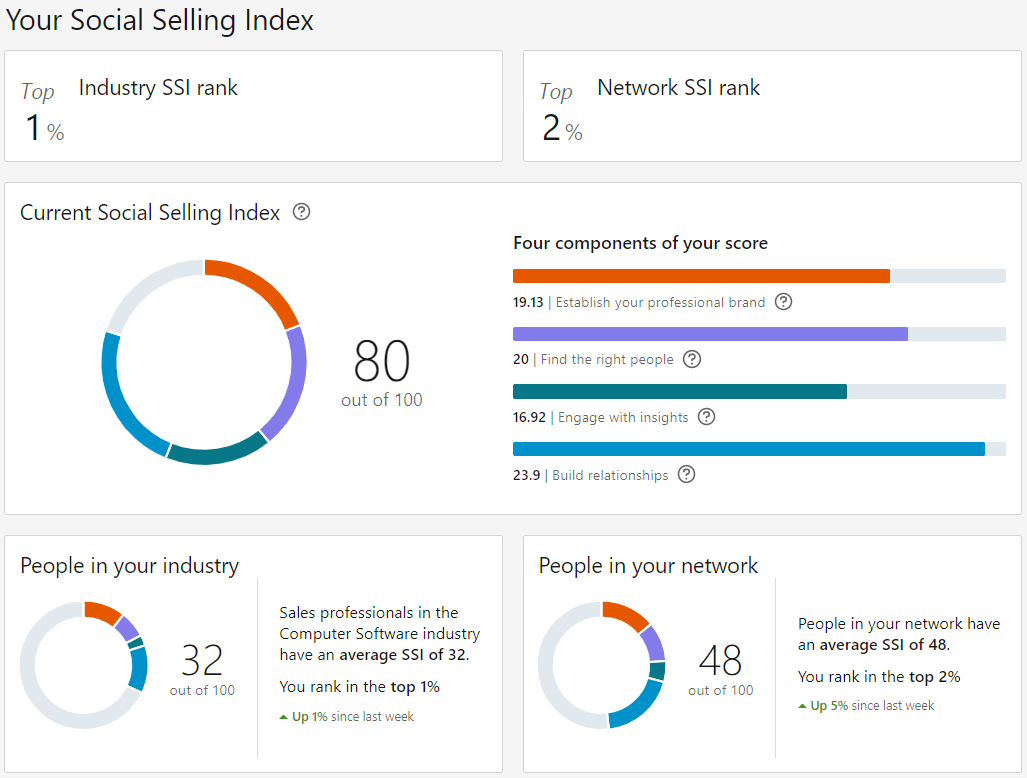
The Social Selling Index is free and available anytime, and it is updated daily. If you wish to see your Social Selling Index, click here.
In general, SSI provides insight into where you currently stand within your network and industry. If you wish to check your Social Selling Index out and improve it, head over to our blog post on how you can improve your LinkedIn SSI Score, and we will tell you all about it.
LinkedIn’s Social Selling Index is not the ultimate metric for social selling as a whole, but it does provide an excellent insight to start with and measure the success on LinkedIn. As LinkedIn is the best social network for B2B sales, it makes sense that you would want to take a step up in your efforts to generate more opportunities there.
Naturally, the social selling index only works on LinkedIn, and you cannot use it across all platforms and activities. What you can measure instead are the metrics below.
#2 Social Selling metric: Message response rate
The goal of social selling has always been quality over quantity and to create a more refined path to conversions. Yet the number of responses stays vital as it mirrors your ability to do the prospecting on LinkedIn, and identify an ideal prospect profile who will respond to you. It's best to track the response rate on each social media account, as it can also indicate your social skill to approach the prospect and which platform works better for you.
How to calculate the message response rate:
(Number of messages responded / Number of Total Messages) x 100
#3 Social Selling Metric: The number of warm leads generated
Since social selling emphasizes building and nurturing relationships, it is only logical to measure this process.

The ability to start a conversation, engage and warm up qualified leads is crucial for the sales funnel and can indicate social selling success. Each warm lead equals an opportunity to present your product or service. To achieve this, you need to have a prior honest and genuine conversation with the prospect to figure out how you can help them. This warm-up needs to be kept track of as they indicate your skills to conduct the beginning steps of selling on social media.
Warmed-up leads are a vital element for generating social selling ROI. Acquiring those types of leads and strengthening the relationship between you and the prospect, will help you during the sales process.
But there is one other benefit. When prospects who you build a strong relationship with become clients, the stronger the relationship is, the longer they will stay as a client, which will generate higher customer lifetime value and lower churn rate.
You can measure warm leads generated by counting the conversation in which you established the relationship, figuring out their pain point, or if they showed initial interest in your company.
#4 Social Selling metric: Social network growth rate
Selling on social media is also about growing your network as much as you can so you can have more opportunities to create warm conversations and develop a valuable relationship with the prospect. That's why social network growth rate is an important metric to track.
The more suitable people you have on your network, the more reach you will have to create opportunities and succeed in selling. You will have a greater chance for your content to be seen by a larger number of the target group members for your business and develop a relationship with them.
The size of the social network plays a massive role in the strategy's effectiveness, but you shouldn’t measure it alone. It should be analyzed along with other metrics, such as engagement rate, to see the complete picture. SDRs who center their efforts around growing their network and not providing value, won’t reach the same results like the ones who do both activities.
How to calculate social network growth rate:
Social Network Growth Rate = (Number of new followers / Number of existing followers) x 100
#5 Social Selling metric: Content engagement rate
The content you share is the foundation of selling on social media. Sharing valuable and relevant, and educational content with your network can position you as an expert in their eyes.
The content with the highest engagement rate is usually the one most valuable to your network. These metrics also show how engaging your audience really is. If the engagement rate is low, you need to get back to the drawing board and think twice about the content you are sharing.
Engagement rate shows whether you are providing the right information to your audience. Type of engagement you need to check out is:
- Likes
- Comments
- Shares
- Saves
How to calculate Engagement Rate:
Engagement Rate (%) = ((Likes+Comments+Shares+Saves) / Total Followers) x 100
#6 Social Selling metric: Number of referrals
One of the main benefits of selling on social media is Word of Mouth, aka referrals. As you build up your network, show your expertise, and engage with leads, you are being positioned as the qualified person to be recommended and referred to. Whatsmore, people will bind your company brand to your name, therefore you will become somewhat of a synonym. You will want to position yourself as a valuable source of information for them to share with others.
The number of referrals is an important metric to track since it shows the exact state of your skill to gain somebody’s trust and provide the right value directly and indirectly to the warm leads connections.
#7 Social Selling metric: Number of booked meetings
The second most important metric to track - the number of demos booked - demonstrates the ability to build a relationship and securely set appointments with the prospect. As leads sometimes tend to vanish before the meeting and never appear, this number should be increased after the meeting finishes.
The higher the number of meetings held, the chances are that the higher number of purchases will be.
#8 Social Selling metric: Average time spent until conversion
Have you ever wondered how much time passes before your warm leads finally convert and pay for the product or service? If not, it’s time that you do.
Analyzing the current time you need to guide prospects through a sales funnel using different social selling activities shows the average time you spent engaging and building relationships across platforms, which ultimately led to conversion. You need to keep track of activities such as the average time:
- Between the first cold approach and response
- To warm up the lead
- To accept a meeting
- The average time to nurture leads
- Overall average time up until the conversion
Being able to see how much time has passed between the activities in total up until the conversion and in combination with other metrics points out shortcomings in your approach and where you can improve your approach. Keep in mind that your approach should be timely and balanced so you can have time to build a relationship, but do not take it too long. Time spent until the conversion is best analyzed with other metrics to show what you are doing wrong.
Experts advise: Social Selling tips to boost sales
Now that we’ve talked about metrics let’s talk about tips and tricks of social selling. Selling on social media channels is not only an activity but much more. It is a strategy to find and convert high targeted leads. There are many tips over the internet, but they are all based on these five basic pillars of social selling:
- Finding the right leads for your business
- Establishing your personal, professional brand
- Engaging with others
- Providing valuable content
- Building a relationship with the prospect.
Let’s check the tips and tricks from experts around the globe and the ones that proved useful here at Skylead.
1. Optimize social media profiles for Social Selling
Before building your network and sharing content, you must first fix your social media profiles. If you ignore this step, you will jeopardize your credibility and most likely waste your efforts on social selling activities.
If we take LinkedIn for example, this is what you need to do:
- Add profile and cover image
- Create a catchy LinkedIn headline for LinkedIn lead generation
- Add a summary
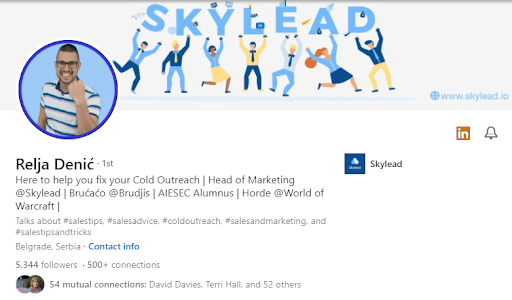
2. Extend your LinkedIn network
As a thought leader, you would want your content to be seen and heard by others, right? That is why the first advice is to extend your social media networks as much as possible and add the right ideal customer profiles at that.
As LinkedIn is the No1 B2B social media network, use it as a base and build other socials around it. You can extend your network by adding second or third connections. The more connections you have, the more you will be able to add other people since the base of the second and third connections will be enriched.
When you send out LinkedIn connection message requests, pay close attention to the note you are sending. Take time to personalize it as this is a crucial step in building the relationship. There are a couple of things you can use here:
- Mention mutual contacts
- Refer to their content piece
- Emphasize the post you both commented
- Mention mutual interests, events you attended, or experiences
Overall, try to form a connection by offering genuine conversation starters.
An example would be:
Hey Stephany,
I’ve noticed that we both attended the “How to define lead generation strategy in 2022” webinar. I saw your awesome profile and wanted to connect and share thoughts and experiences.
Be sure to check out the DOs and DON’Ts of LinkedIn networking.
3. Build your credibility
Your company has an established brand and credibility on social media. For social selling, you need to do the same. You can build and develop credibility and personal brand with each post, share, comment, or discussion on Social Media.
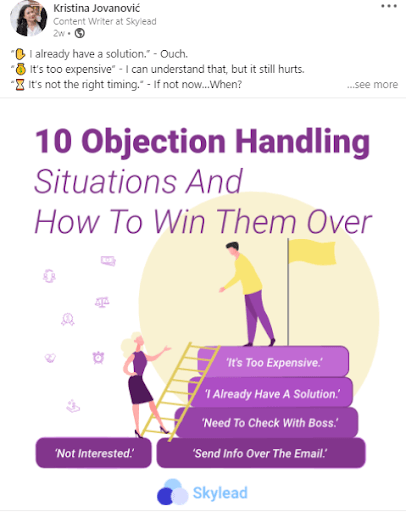
This way, you can showcase your involvement in the industry, demonstrate your expertise and offer value to your prospects. Share your insights, case studies, and success stories. The key here is to be consistent and never to forget to stay active. Always be providing value.
Additional tip: A great conversation starter is to see who liked your post, scrape the data, send them a message and ask for their two cents on the matter.
Example:
Hey John,
I’ve noticed you liked my post on objection handling situations. I was wondering what your experience is in that matter. What objection did you come across the most?
You can also build your credibility by asking for recommendations or endorsements from your network, be it your colleagues or people from the same industry.
4. Participating & engaging in groups
Another way to reach a wider audience is mingling in various social media groups, and the ones outside them, for example Slack or web-based groups, such as GrowthHacker and IndieHackers.
All you need to do is research the groups on every social media channel you use and join them. Once accepted, you can share your posts, chat with other members and find your ICP there.
This relationship that you’ve formed with relevant prospects through groups is an important step for nurturing them as prospects and warming them up. You can start with sharing valuable content, and then introduce them with your product or service, product launches.
On LinkedIn and Facebook, you can search groups easily with keyword search and group filter, whilst Slack groups are a bit harder to find, meaning you would need to Google them. LinkedIn has a vast base of groups, but keep in mind that only some groups on LinkedIn are active, and niche ones at that. Other LinkedIn groups are not active at all.
If you have something to contribute to the group, and you see how you can genuinely interest someone in your product, by all means, do so, but do not copy/paste salesy comments that have no context to the post or prospect’s comment alone. It will only irritate other members. Progress in the conversation in a more natural, push-free way.
5. Researching the prospects
When you handpick a prospect to reach out to, and go all social selling on him, stop and prepare. You need to do the research beforehand.
Social media channels alone are a great way to find out more about someone’s interests, work, and hobbies, so use them. See what they are:
- Reading,
- Sharing,
- What they value most,
- What their thoughts and feelings are.
For example, you can use Twitter to find out about their feelings and trending topics they casually talk about, Facebook for their interest, and LinkedIn for their work. Once you find the necessary information, write it down, and create a personalized outreach based on it, to start building a relationship.
Example:
Hey Mike,
I noticed you openly talked about how patience and long-term planning are crucial for employee retention. Cheers for that, I agree completely. What would you say if I told you that both patience and long-term vision could be easily transferred to employees, so they stay in the company longer?
6. Engage to nurture prospects
If creating content is not your virtue, fear not. If we talk about social selling, one of the main activities, besides publishing your posts, is liking, commenting, and sharing other people’s content.
Pay attention to what others are saying. If you have anything to say, comment and engage with your ICP. Be observant - read, listen, and always keep learning since this will give you greater opportunities to approach your leads, build relationships and nurture them. Your daily social selling activity should be liking, sharing, or commenting on your ICP’s post. When you engage like this, the prospect will see that you are interested in them and be more open to continuing the conversation with you.
7. Nurture existing customers
If we talk about social selling, we simply cannot neglect the existing customers. According to European Business Review, acquiring new customers is five times more expensive than keeping the existing one. After all, existing customers are essential for your customer lifetime value.
The happier and more engaged your existing customers are, the more chances you will get to upsell them and retain them, not to mention the higher the average lifetime value is. Even though they are now in the customer success realm, you as a salesperson cannot forget them because of it, so it is important to engage with them every now and then. Since sales folk have a lot on their plate, they still need to choose where to focus their efforts. That’s where individual customer lifetime value comes into play and analyzing whether the extra action is needed.

8. Keep it real - Create relationships not pushing sales
If we hadn’t emphasized enough so far, let’s do it again - build relationships instead of solely trying to sell. Not a single soul likes being sold something, as everyone ends up feeling manipulated, to say the least. Check it yourself - wouldn’t you feel this way?
Instead, ask what they do, gain full interest in it, make a conversation, and joke here and there, naturally as a human conversation goes when you first meet someone. Be a real person before pitching. Whether you have the best service or a product out there, your job as a sales rep is to make relationships first.
Social selling experts say that even throughout making a relationship you constantly need to provide value to someone to prove your expertise and that is the key to gaining their trust.
After you establish this, listen carefully to what their pain points are and reply to their exact problem. How? With a tailor-made response to present your product.
In addition, if you are not the best fit, be real with yourself, let it be, and move on to find a better ICP.
9. Personalize with GIFs and images
Even though it still isn’t a popularized approach, it always works. Finding the perfect GIF or image and putting your face on it with a custom message will make the prospects loosen up and make them like you even more.
Here is an example of how you can personalize your GIFs and Images in Skylead.

10. Keep it real, but enjoy the process
Social selling is about mingling with people, hearing their stories, learning about new experiences and trends. Remember, people come to social media to relax and escape boredom. They always want to see nice things or interesting videos. So to stay on top and succeed, you need to follow it. This means sharing witty posts or videos from time to time. Find your unique voice in the sea of posts and develop your personal brand.
The key here is to have fun, enjoy interacting with people and build an audience that will remain loyal to your brand.
Summary
Sales really did go far from the old ways, and social selling was a natural evolution step as opposed to a pushy, one-dimension approach. That means things got a bit complicated, but more fun. Here are all the tips formed in one checklist:
1. Optimize social media profiles for Social Selling
2. Extend your LinkedIn network
3. Build your credibility
4. Participating & engaging in groups
5. Researching the prospects
6. Engage to nurture prospects
7. Nurture existing customers
8. Keep it real - Create relationships not pushing sales
9. Personalize with GIFs and images
10. Keep it real, but enjoy the process
When executed together, these tips can improve your sales. You just need to keep in mind that all of the above won’t help you if you do not change your mindset. Empathy is everything and the key to successful social selling. If you do not genuinely care and do not wish to help others, all the battles are lost.
Prepare - the next step is drawing out a social selling strategy.
Wish to personalize your approach and automate a part of your social selling tasks? Check out Skylead and enjoy the ride.


